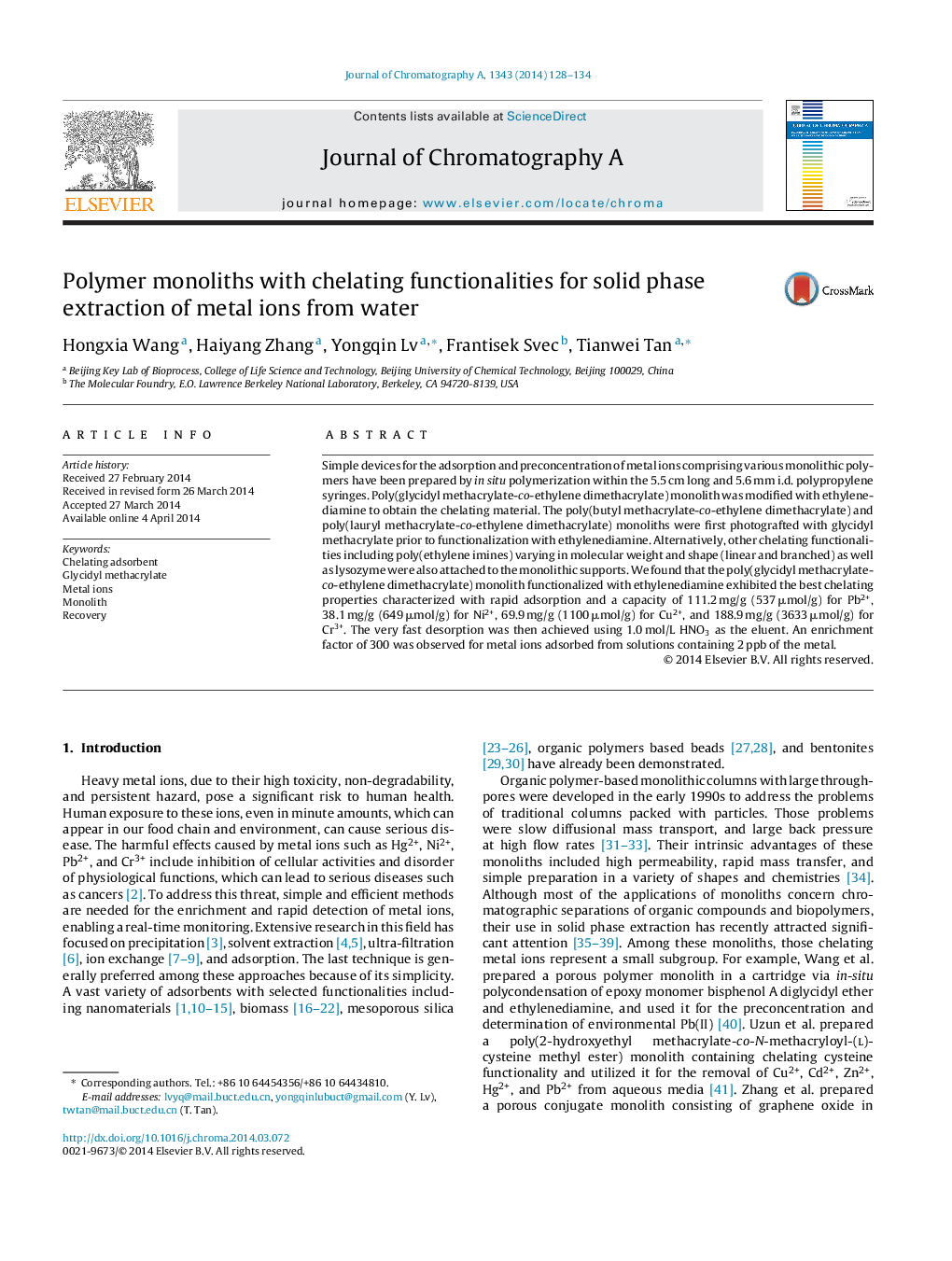| Article ID | Journal | Published Year | Pages | File Type |
|---|---|---|---|---|
| 1200058 | Journal of Chromatography A | 2014 | 7 Pages |
•Simple monolithic adsorption devices for chelating of metal ions were prepared in syringe barrels.•Poly(glycidyl methacrylate-co-ethylene dimethacrylate) monolith modified with ethylenediamine exhibited the best adsorption properties.•Large enrichment factor was achieved for metal ions adsorbed from very dilute solutions.
Simple devices for the adsorption and preconcentration of metal ions comprising various monolithic polymers have been prepared by in situ polymerization within the 5.5 cm long and 5.6 mm i.d. polypropylene syringes. Poly(glycidyl methacrylate-co-ethylene dimethacrylate) monolith was modified with ethylenediamine to obtain the chelating material. The poly(butyl methacrylate-co-ethylene dimethacrylate) and poly(lauryl methacrylate-co-ethylene dimethacrylate) monoliths were first photografted with glycidyl methacrylate prior to functionalization with ethylenediamine. Alternatively, other chelating functionalities including poly(ethylene imines) varying in molecular weight and shape (linear and branched) as well as lysozyme were also attached to the monolithic supports. We found that the poly(glycidyl methacrylate-co-ethylene dimethacrylate) monolith functionalized with ethylenediamine exhibited the best chelating properties characterized with rapid adsorption and a capacity of 111.2 mg/g (537 μmol/g) for Pb2+, 38.1 mg/g (649 μmol/g) for Ni2+, 69.9 mg/g (1100 μmol/g) for Cu2+, and 188.9 mg/g (3633 μmol/g) for Cr3+. The very fast desorption was then achieved using 1.0 mol/L HNO3 as the eluent. An enrichment factor of 300 was observed for metal ions adsorbed from solutions containing 2 ppb of the metal.
